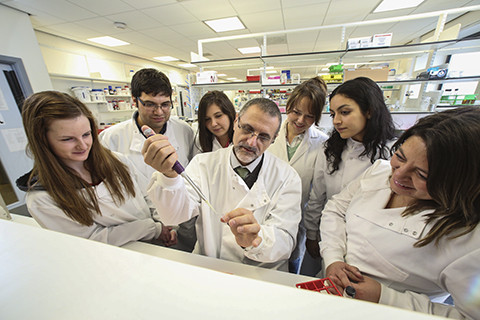New research from Western University unravels a novel means of communication that allows bacteria such as Burkholderia cenocepacia (B. cenocepacia) to resist antibiotic treatment. B. cenocepacia is an environmental bacterium that causes devastating infections in patients with cystic fibrosis (CF) or with compromised immune systems.
Dr. Miguel Valvano and first author Omar El-Halfawy, PhD candidate, show that the more antibiotic resistant cells within a bacterial population produce and share small molecules with less resistant cells, making them more resistant to antibiotic killing. These small molecules, which are derived from modified amino acids (the building blocks used to make proteins), protect not only the more sensitive cells of B. cenocepacia but also other bacteria including a highly prevalent CF pathogen, Pseudomonas aeruginosa, and E. coli. The research is published in PLOS ONE.
“These findings reveal a new mechanism of antimicrobial resistance based on chemical communication among bacterial cells by small molecules that protect against the effect of antibiotics,” says Dr. Valvano, adjunct professor in the Department of Microbiology and Immunology at Western’s Schulich School of Medicine & Dentistry, currently a Professor and Chair at Queen’s University Belfast. “This paves the way to design novel drugs to block the effects of these chemicals, thus effectively reducing the burden of antimicrobial resistance.”
“These small molecules can be utilized and produced by almost all bacteria with limited exceptions, so we can regard these small molecules as a universal language that can be understood by most bacteria,” says El-Halfawy, who called the findings exciting. “The other way that Burkholderia communicates its high level of resistance is by releasing small proteins to mop up, and bind to lethal antibiotics, thus reducing their effectiveness.” The next step is to find ways to inhibit this phenomenon.
The research, conducted at Western, was funded by a grant from Cystic Fibrosis Canada and also through a Marie Curie Career Integration grant.
Story Source:
The above story is reprinted from materials provided by University of Western Ontario.





